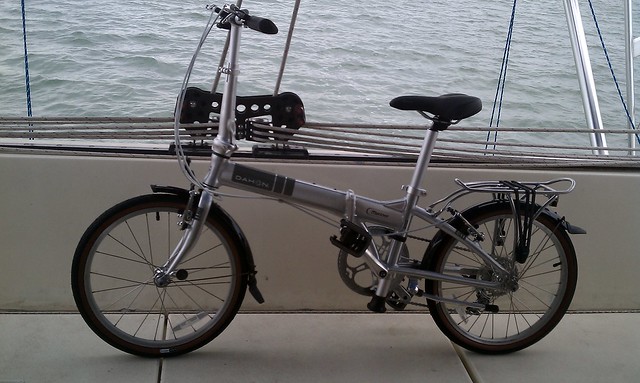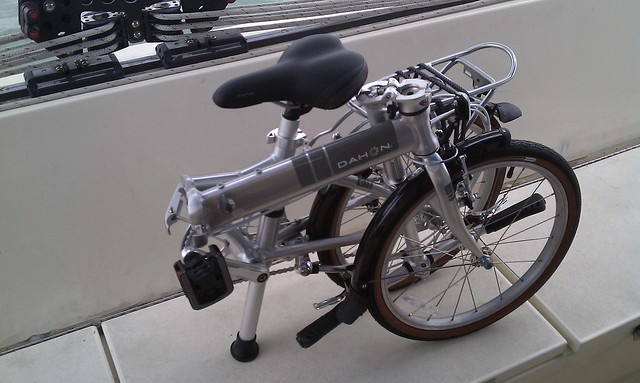This is an awkward question because it delves into a number of emergency situations that I contemplate and prepare for, but never expect to happen. I give fair warning that the discussion of the safety items we carry may conjure images of potential disasters that necessitate their use. I assure you, dear reader, that I have considered these in detail and with a great sense of responsibility. Your nightmares are no match for mine. That said, we feel strongly that our life afloat is no more dangerous, in fact less, than life ashore. Perhaps a future post will address this point directly.
Boats are required to carry certain items for the safe operation of the vessel. The list varies by the length of the vessel and how many passengers it carries. The most prominent items are flares, fire extinguishers, and life jackets. My boats have been boarded by the Coast Guard twice for inspection. Both times were pleasant, cordial experiences and no deficiencies were cited.
Take Two came to us with a very extensive set of flares, some very exotic and expensive-looking. Unfortunately they were all expired. Some even said they were made in “West Germany”. We went through them and kept the ones that still looked good, just in case, and the rest we donated at the local hazardous waste dropoff. We have newer ones to show the Coast Guard when they check, but the old stuff probably still works just as well.
Everybody has their own life jacket (Personal Flotation Device in Coast Guard lingo). The kids spend so much time wearing theirs that they look natural in them. Tanya and I have the auto-inflating kind, but wear them less often. Mine has an integrated harness so Tanya has a way to haul me back aboard if I’m injured or unconscious. Tanya has a separate harness because her PFD is designed for women, and they don’t make those with the integrated harness for some reason. During rough weather or at night, the harness is attached to the boat with a tether to keep us from going overboard in the first place.
We have an Autotether system to alert us if someone does go over. The system consists of little transmitters that are placed on the life jackets. The transmitters communicate with a base station aboard the boat several times a second. If the base station loses contact with the transmitter, it immediately sounds a very loud alarm.
The boat also came with an exposure suit, which is kind of a cross between a wetsuit and a ski jacket. I tried it on and almost passed out from heat. We don’t have any plans to be in water cold enough that we would need something like that, so I got rid of it.
We have these silly little tapered plugs that you’re supposed to have so you can jam them in holes or broken hoses to stop water flow. I was sure I’d never need them, but damn if I haven’t had to use them TWICE to keep the ocean on the outside.
Of course we have a VHF radio, but it only has a range up to about 40 miles. At some point we will probably get a single sideband (i.e. shortwave) radio that can bounce signals off the ionosphere to the other side of the planet. In addition to voice, the SSB can be used for receiving weather faxes and even email. When we start venturing beyond US coastal waters we’ll probably get an Iridium satellite phone, which can also be used for email and very light Internet access. All of these can be useful for giving and receiving help during emergencies, but the satellite phone would be especially valuable if we needed to obtain medical advice.
We carry a rather extensive first aid and medical kit, including some good prescription medicines and surgical supplies (thanks Jeff!). We have received two days’ worth of training on how to use the stuff, but we’ll still need outside advice for any major issues. Additionally, Tanya has had CPR training and attended a Safety at Sea seminar.
If, God forbid, someone should need immediate medical attention when we’re far from civilization, we have an Emergency Position Indicating Radio Beacon (EPIRB). When triggered, it communicates who and where we are to a satellite, which relays the information to global search and rescue authorities (such as the US Coast Guard, among others). It does not, however, indicate what our problem is, and the assumption is that we require evacuation.
Depending on where we are, help will usually come in the form of a rescue boat or helicopter, but I have heard of things as diverse as military jets and commercial fishermen making initial contact. It just depends on who can get there the fastest. How long it takes will depend on weather and location. Helicopters don’t fly in hurricanes.
I have heard of two recent EPIRB rescues that probably represent the best and worst cases. Abby Sunderland was recently rescued from the southern Indian Ocean. She set it off on Thursday morning and was picked up by a fishing vessel on Saturday. Then earlier this week a boat capsized 20 miles off the coast of California. The Coast Guard was there within an hour to rescue three hypothermic crew members.
EPIRBs, personal locator beacons (PLBs), and the SPOT devices have been criticized for emboldening people who aren’t adequately prepared for their adventurous undertakings. When they get in a little over their heads they just turn on the EPIRB for a ticket home. We take our EPIRB very seriously. We know that if we ever set that EPIRB off we will be leaving the boat with nothing but the clothes on our backs and will probably never see it again. Needless to say, that isn’t something we’ll do unless absolutely necessary.
The life raft is our last resort. The boat came with a raft, but upon evaluating its condition and the costs of recertification, we opted to buy a new one. We’ve been without one for awhile, but we finally placed the order for an 8-man Winslow this week. This particular brand is made here in Florida, so we’ll go see it when it’s ready and before it is packed up and sealed. This familiarity will be important, especially for the kids, if we ever have to use it for real.
I really don’t think there is a likely scenario that would see us use the raft. The adage says you should always step up to the life raft, meaning your boat should be sinking. History is rife with examples of crews taking to the raft and being lost, while the boat is later found afloat. Being a catamaran and thus not having ballast, I don’t think Take Two is likely to sink. We have powerful pumps to remove unwanted water and materials for plugging any holes. But any number of unexpected things could happen that we might need to abandon the boat. Since mothers may be reading, we’ll let those horrors remain nameless. If nothing else, the life raft is a really expensive insurance policy.


